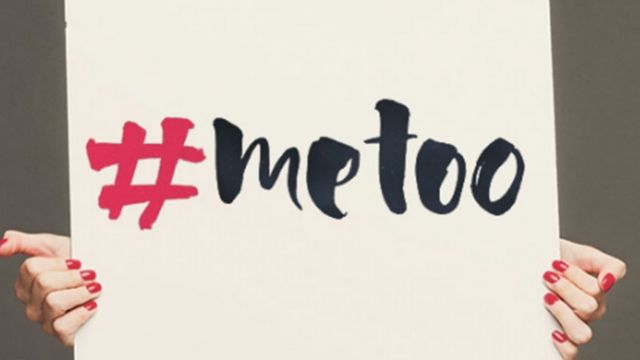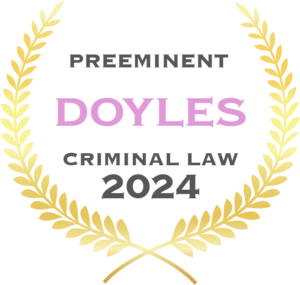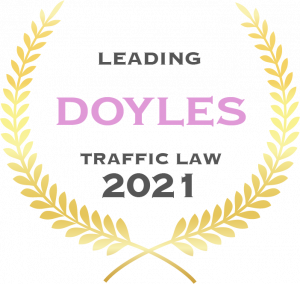The woman who created the French version of the #MeToo hashtag was in court last week responding to a defamation claim.
Journalist Sandra Muller was sued by French TV executive Eric Brion over a tweet she posted in 2017.
The tweet accused Brion of making an inappropriate sexual comment. He has since apologised for his behaviour, which he described as ‘clumsy flirtation’.
Muller’s tweet was accompanied by the hashtag #balancetonporc, roughly translated, this means “expose your pig”.
Brion is seeking €50,000 (AUS $80 000) in damages. He is also demanding that Muller’s tweet be deleted.
The judge deferred their verdict and is expected to deliver it in September.
Defamation in Australia
Defamation occurs when someone suffers loss of reputation as a result of someone publishing defamatory material which causes others to think less of them.
In Australia, defamation can attract both civil and criminal liability.
Defamation has been in the spotlight in Australia in recent years, most recently when actor Geoffrey Rush was awarded $2.87 million after suing the Daily Telegraph earlier this year. In 2017 actor Rebel Wilson celebrated a win in her defamation action against Woman’s Day Magazine.
Elements of civil defamation
In the context of civil litigation, the parties are called the plaintiff and the defendant. The plaintiff is the person alleging that the defamation has occurred. The defendant is the person accused of defaming the plaintiff.
In order for a defamation claim to succeed, the plaintiff is required to prove three things:
- The material was defamatory;
- The plaintiff was identified as the person to whom the defamatory matter relates; and
- The defendant published the defamatory material.
These elements must be proved on the balance of probabilities.
An action for defamation must be brought within 1 year of the date of the publication.
What constitutes defamatory material?
Material may be deemed defamatory if it causes the ‘ordinary, reasonable person’ to ‘think less of a person’ or to ‘shun, shame or avoid a person’.
A person may be defamed by any material that ‘exposes them to hatred, contempt or ridicule’.
It is for the judge or jury to determine whether the material is defamatory.
Is the plaintiff identified?
It is a requirement that the plaintiff is identified as the subject of the defamatory material. However, they do not need to be explicitly identified.
It will be sufficient if people may reasonably believe that the defamatory material relates to the plaintiff.
Was the material published?
The plaintiff will also be required to prove that the material was published.
In the context of defamation, ‘publishing’ does not refer to the mass media.
An action will amount to ‘publishing’ if the defendant has made a defamatory comment to a third party. The defamatory comment need not be written down.
The means of dissemination is also irrelevant. You need not be the author of the defamatory material to be liable.
If you ‘share’ defamatory material on Facebook, or retweet it on Twitter, you can be held liable.
Who can be defamed?
This is probably best determined by outlining who cannot be defamed.
You cannot defame any of the following:
- A person who has died;
- A corporation with fewer than 10 employees;
- A government (or local council).
Defences to defamation
There are a number of defences available in defamation proceedings.
Common defences include:
- The matter is substantially true;
- The matter was expressed as an opinion as opposed to a statement of fact;
- The publication was ‘trivial’, in the sense that the plaintiff was unlikely to sustain any harm;
- The matter is subject to absolute privilege (i.e. it has been published in the course of proceedings of a parliamentary body);
- The matter was published in a ‘fair report of public concern’;
Key Takeaways
- Sandra Muller, who initiated the French #MeToo movement, faced a defamation suit by Eric Brion for a tweet accusing him of inappropriate behavior, which he later termed as "clumsy flirtation."
- Brion sought €50,000 in damages and demanded the deletion of Muller's tweet, highlighting the legal consequences of public accusations on social media.
- The case underscores the balance between freedom of expression and protection against defamation, reflecting broader issues within the #MeToo movement's impact on social and legal landscapes.
Criminal defamation
In serious cases, the police may charge an individual with criminal defamation, pursuant to section 529 of the Crimes Act.
The maximum penalty for criminal defamation is 3 years imprisonment.
The additional elements of criminal defamation are:
- The accused person knew the matter was false; and
- They published the matter with the intent to cause serious harm to the victim or any other person (or were reckless as to whether such harm was caused).
If you have been charged with criminal defamation, or any other criminal matter, call Hamilton Janke Lawyers 24 hours a day, 7 days a week on 4038 1666.
Written By

James Janke
James Janke is founding partner at Hamilton Janke Lawyers, and has more then decade of experience as a Criminal Defence Lawyer. Admitted to both the Supreme Court of New South Wales and High Court of Australia




